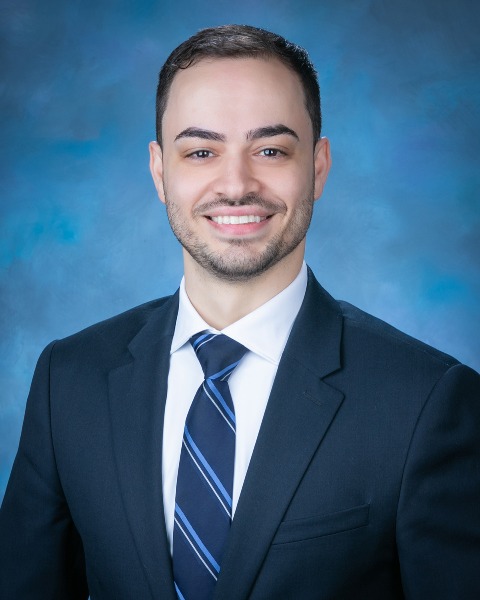Women's & Men's Health
Uterine Artery Embolization for Fibroid Treatment: A National Clinical and Financial Comparison

Waseem Wahood, MS
Medical Student
Dr. Kiran C. Patel College of Allopathic Medicine, Nova Southeastern UniversityDisclosure(s): No financial relationships to disclose
- SR
Summer Roorda, BS
Medical Student
Dr. Kiran C. Patel College of Allopathic Medicine - LF
Lexi Frankel, BS
Medical Student
Dr. Kiran C. Patel College of Allopathic Medicine - SR
Sarah Raines, BS
Medical Student
Dr. Kiran C. Patel College of Allopathic Medicine - NO
Nadia Obaed, BS
Medical Student
Dr. Kiran C. Patel College of Allopathic Medicine - IM
Iliza Minaya, BS
Medical Student
Dr. Kiran C. Patel College of Allopathic Medicine - PT
Prahasit Thirkateh, MD
Resident
Northwestern University Feinberg School of Medicine - RV
Robert Vogelzang, MD
Professor
Northwestern Memorial Hospital
Poster Presenter(s)
Author/Co-author(s)
Uterine fibroids are benign tumors originating from the myometrium consisting of smooth muscle. Each year, 200,000 hysterectomies are performed for the treatment of uterine fibroids. Uterine artery embolization (UAE) is another well-documented treatment for uterine fibroids that is minimally invasive with rapid recovery times. Herein, we aimed to assess the outcomes of hysterectomy versus UAE for the treatment of uterine fibroids using a national database.
Materials and Methods:
The National Inpatient Sample (NIS) was queried for admissions involving patients with fibroids from 2012 to 2019. Admissions were divided into groups 1) those who receive UAE, 2) those who received hysterectomy, and 3) those who receive myomectomy. Trend in proportion of utilization of UAE was conducted using Cochran-Armitage test. Multivariable logistic regression was conducted to assess patient profile of those who received UAE as well as non-routine discharge (Transfer to Short-term Hospital, Transfer to Skilled Nursing Facility or Intermediate Care Facility, Home Health Care, Against Medical Advice). These results are depicted as odds ratios (ORs) and 95% confidence intervals (CIs). Negative binomial regression was used to assess risk factors associated with total charge (in 2020 dollars) and total length of stay (LOS). These results are depicted as beta-coefficients (coef.) that are interpreted as percents.
Results:
975,140 admissions involved intervention for fibroids; 810,985 (83.17%) underwent hysterectomy, 10,465 (1.07%) underwent UAE, and 153,690 (15.76%) underwent myomectomy. There was an increase in the trend of utilization of UAE by an average of 0.05% per year (95% CI: 0.022 to 0.077; p< 0.001) and myomectomy by average of 1.27% (95% CI: 1.13 to 1.40; p< 0.001). Compared to White patients, UAEs were more likely utilized by Black patients (OR: 1.98; p< 0.001) and those of other races (OR: 1.38; p=0.001). Those who underwent UAEs (OR: 1.46; p=0.002) had higher odds of non-routine discharge compared to those who underwent hysterectomies. Those who underwent UAE had a higher total charge by 23.3% (p< 0.001) and similar LOS (coef.: 0.40%; p=0.879) compared to those who received hysterectomy.
Conclusion:
Uterine artery embolization is a rapidly growing treatment for symptomatic uterine fibroids. Its use has resulted in similar length of stays and increased total charge and odds of non routine discharge as compared to hysterectomy. UAE utilization is higher in Black patients, suggesting an area for further investigation.

.png)
.jpg)
.png)
.jpg)
.jpg)
.png)
.png)
.png)
.png)